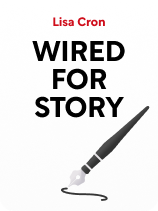

This article is an excerpt from the Shortform book guide to "Wired for Story" by Lisa Cron. Shortform has the world's best summaries and analyses of books you should be reading.
Like this article? Sign up for a free trial here.
Do you confuse your readers by adding too much detail or the wrong kind of detail? What should you include, and what should you leave out?
Lisa Cron discusses how to use details in a story, explaining that details should be concrete rather than abstract—and enough but not too much. Cron shares her advice on how to use details to enhance your plot rather than distract from it, explaining that your protagonist helps you determine what to include.
Continue reading to learn how to strike the right balance when it comes to using details in a story.
Use Only Important Details in a Story
Cron emphasizes the need for efficiency in your story. You should include only information about the four elements that the reader needs to understand the story: the protagonist, the protagonist’s goal, the plot, and what the story’s truly about (the underlying lesson).
Neurologically, the brain can process around five to seven pieces of information at a time—but it receives over 11 million per second. That means we filter out information that’s irrelevant to us and our goals, and we subconsciously expect stories to do the same. When readers have to sift through information that’s irrelevant to these parameters, they lose track of what’s supposed to be holding their attention, and, thus, they lose interest.
(Shortform note: The idea that the brain can only process around seven pieces of information at a time came from the research of psychologist George Armitage Miller in 1956. However, other research has suggested that the number may be closer to four, which would mean it’s even more vital to keep your writing concise and limited only to important details. What’s more, the fact that the brain receives over 11 million pieces of information per second is viewed as a reason for cognitive biases: We simply can’t process all this information at once and therefore take cognitive shortcuts. So you can help your reader avoid making biased assumptions based on an overwhelming amount of information by giving them only the details they need.)
In addition, the brain processes information through concrete details. Cognitively, it’s difficult for us to understand abstract concepts or generalities, so, when writing a story, it’s essential to use details for everything. While excessive, unnecessary details in a story will derail it and distract the reader, describing things generally or abstractly will confuse the reader and keep them from understanding the point.
(Shortform note: As mentioned above, though Cron’s advice is directed at literary fiction, it can be applied to any type of writing, and the use of concise, concrete details is particularly useful for marketing writing. Copywriters have to grab a reader’s attention immediately, and concrete details offer something clear that they can easily visualize, so they instantly understand the point of what they’re reading. Concrete details are useful even in verbal communication in fields like customer service: Research shows that using concrete details when discussing issues with customers increases customer satisfaction.)
Let Your Protagonist Help
According to Cron, the protagonist is what helps you as a writer determine what information is important and what isn’t. The protagonist is who the story is about, and it’s the character your reader will need to relate to in order to feel engaged in the story and understand the importance of everything that happens. In her book, she discusses how to create a protagonist who’s relatable.
The way the reader relates to the protagonist and understands the importance of the story’s events is through emotion. Therefore we must convey information about the protagonist through their emotional state. Indeed, the importance of every detail in your story is determined by its emotional impact on the protagonist.
Emotion is what helps us determine what information is important and what isn’t. To illustrate this neurological phenomenon, Cron shares the story of a man who suffered brain damage that took away his ability to feel emotion. Though the incident had no impact on his intelligence, memory, or problem-solving skills, he was unable to continue in his successful career because he could no longer make decisions, even minor ones. His neurologist concluded that without emotion, every option in every choice seemed neutral—and thus, was equally important and impossible to decide upon.
(Shortform note: The neurologist’s full conclusions were slightly more nuanced than Cron suggests. He argued that emotion alone doesn’t determine the choices we make. Instead, he suggests that emotion biases our choices but that we still use reason and logic to determine what we ultimately choose. Applying this to writing, it may not be enough to simply convey your characters’ emotions. You may also need to detail their thinking, problem-solving processes, and cost-benefit analyses to fully let the reader in on what’s happening and why the protagonist behaves the way they do.)
In the same way that having no emotion keeps someone from assessing the importance of a piece of information, if the reader doesn’t understand the emotional impact a detail has on your protagonist, the detail will seem unimportant, and the reader won’t be interested in it. In this regard, says Cron, prose writing offers a narrative tool not available in other types of storytelling like screenwriting or playwriting: the ability to see into another person’s mind and directly understand their internal thought processes—how a piece of information is affecting them, for instance. While media like films and plays leave the viewer to intuit the characters’ emotions and thoughts, prose can convey them explicitly.

———End of Preview———
Like what you just read? Read the rest of the world's best book summary and analysis of Lisa Cron's "Wired for Story" at Shortform.
Here's what you'll find in our full Wired for Story summary:
- How humans have a neurological need for stories
- The formula that the human brain expects to encounter in a story
- How to build a protagonist that engages your reader






